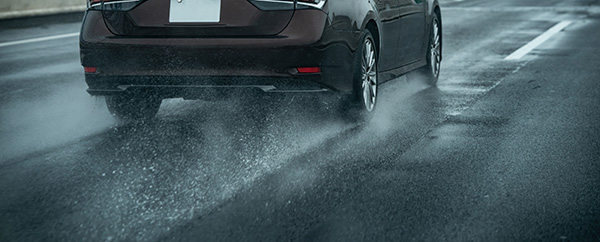
Driving on wet roads can turn from routine to risky in the blink of an eye. When rainwater covers the asphalt, it becomes a playground for hydroplaning, a dangerous situation where your car loses traction and feels like it's floating. Hydroplaning can happen to any driver, but the good news is, there are ways to avoid it.
What Is Hydroplaning
Hydroplaning happens when your tires lose contact with the road due to a layer of water. When the water between your tires and the road builds up faster than your tires can channel it away, your car begins to glide uncontrollably. The result? You lose control of steering, braking, and acceleration, which is why it’s so dangerous. It’s especially common in the first few minutes of rainfall when oil and dirt mix with water on the surface of the road, making it extra slippery.
How Speed Impacts Hydroplaning
One of the biggest culprits of hydroplaning is driving too fast for the road conditions. The faster you're going, the harder it is for your tires to push water out of the way. Hydroplaning often occurs at speeds over 35 mph, especially if your tires are underinflated or have low tread depth. Slowing down when the roads are wet is your first line of defense. By keeping your speed low, you give your tires a better chance to maintain contact with the road, reducing the likelihood of hydroplaning.
The Importance of Tire Tread
Tire tread is your best friend when it comes to preventing hydroplaning. The grooves in your tires are designed to channel water away from the surface of the tire, allowing the rubber to stay in contact with the road. When the tread wears down, this water-channeling ability decreases, making hydroplaning more likely.
Regularly checking your tire tread depth is crucial, especially if you live in an area prone to heavy rain. A quick way to do this is the penny test: insert a penny into the tread with Lincoln’s head facing down. If you can see the top of Lincoln’s head, your tires are worn and may need to be replaced. Tires with deep tread are better at resisting hydroplaning, giving you more control when driving in wet conditions.
How Tire Pressure Affects Hydroplaning
Just as important as tire tread is tire pressure. Underinflated tires can increase your chances of hydroplaning because they spread out more on the road’s surface, making it harder for water to escape. On the other hand, overinflated tires don’t grip the road properly, which also reduces traction. Keeping your tires properly inflated according to your vehicle's specifications is another simple yet effective way to avoid hydroplaning.
Other Tips for Avoiding Hydroplaning
While tire maintenance and speed are the primary factors in hydroplaning prevention, there are other steps you can take to stay safe on wet roads:
Avoid Puddles
Large puddles can cause sudden hydroplaning, especially if you're driving too fast. When possible, steer clear of standing water on the road.
Don’t Use Cruise Control
Cruise control can prevent you from reacting quickly when your car starts to hydroplane. By keeping your foot on the pedal, you’re more able to adjust your speed if your tires lose grip.
Brake Gently
If you start to hydroplane, resist the urge to slam on the brakes. Instead, ease off the accelerator and steer gently in the direction you want to go. Abrupt braking or sharp turns can make you lose control entirely.
Keep Your Distance
Wet roads mean longer stopping distances. Give yourself extra space between you and the vehicle ahead to account for reduced traction.
What to Do If You Hydroplane
Even with all the precautions in place, hydroplaning can still happen. If your car begins to lose traction, it’s important to stay calm. Avoid sudden movements and let off the gas pedal to allow the car to regain grip. If you need to steer, do so gently and in the direction you want the car to go. Resist the urge to brake hard, as this can cause your tires to lock up and make the situation worse.
Maintaining control during hydroplaning is all about gentle corrections. Let the car slow down naturally while keeping a firm grip on the steering wheel. The less you panic, the better chance you have of regaining control quickly and safely.
Tire tread looking low? Hydroplaning is a real threat on wet roads. At Knight Automotive, we offer tire replacements and inspections to keep you safe on the road. Stop by today for expert service!